
Sybille Maria Christina Schmitz was a German actress.

Kurt Kreuger was a Swiss-reared German actor. Kreuger once was the third-most-requested male actor at 20th Century Fox. He starred with, among others, Ingrid Bergman and Humphrey Bogart.
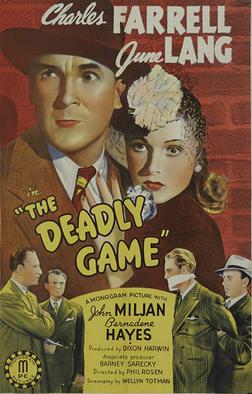
The Deadly Game is a 1941 American thriller film directed by Phil Rosen and starring Charles Farrell, June Lang and John Miljan. The film was produced and distributed by Monogram Pictures. It was Farrell's 53rd and final film appearance, although he would reemerge more than a decade later on television as the lead in My Little Margie.
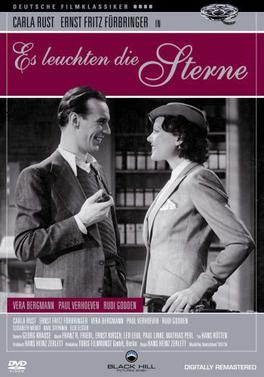
The Stars Shine is a 1938 German musical revue directed by Hans H. Zerlett and written by Zerlett and Hans Hannes.
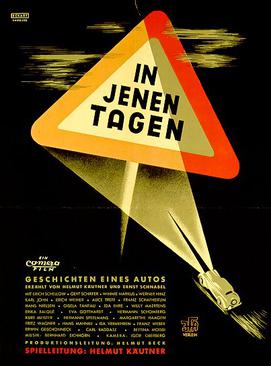
In Those Days is a 1947 German drama film directed by Helmut Käutner and starring Gert Schäfer, Erich Schellow and Winnie Markus. It was one of the cycle of Rubble films made in the wake of Germany's defeat during World War II. The film addresses issues of collective guilt during the Nazi era, using the device of a car built in 1933 and dismantled in 1947 narrating the various experiences of its owners in a series of seven separate episodes. The film's objective was to highlight the private resistance of various figures to the Nazis even while they publicly accepted the repression of Nazi society.

The Roundabouts of Handsome Karl is a 1938 German comedy film directed by Carl Froelich and starring Heinz Rühmann, Karin Hardt, and Sybille Schmitz. It portrays the experiences of a young waiter during the Great Depression.

Sensation in Savoy is a 1950 West German comedy crime film directed by Eduard von Borsody and starring Sybille Schmitz, Paul Klinger, and Karl Schönböck.

Sergeant Schwenke is a 1935 German crime drama film directed by Carl Froelich and starring Gustav Fröhlich, Marianne Hoppe and Karl Dannemann. It was made at the former National Studios in Berlin's Tempelhof area which were now controlled by Froelich. The film's sets were designed by the art directors Franz Schroedter and Walter Haag. It is based on a novel of the same title by Hans Joachim Freiherr von Reizenstein. It was remade in 1955 as Sergeant Borck..

At the Well in Front of the Gate is a 1952 West German romance film directed by Hans Wolff and starring Sonja Ziemann, Hans Stüwe and Paul Klinger. It was shot in Agfacolor at the Tempelhof Studios in West Berlin and on location around Dinkelsbühl in Bavaria. The film's sets were designed by the art directors Willi A. Herrmann, Heinrich Weidemann and Peter Schlewski.
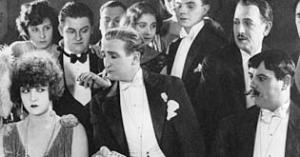
The Prince and the Dancer is a 1926 German silent film directed by Richard Eichberg and starring Willy Fritsch, Lucy Doraine and Hans Albers. The film was shot at the Johannisthal Studios with sets designed by the art director Kurt Richter. It premiered at the Gloria-Palast in Berlin.
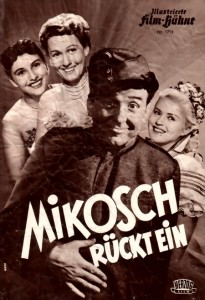
Mikosch Comes In is a 1952 West German comedy film directed by Johann Alexander Hübler-Kahla and starring Georg Thomalla, Willy Fritsch and Paul Hörbiger. It was shot at the Tempelhof Studios in West Berlin. The film's sets were designed by the art directors Willi A. Herrmann and Heinrich Weidemann.

Illusion in a Minor Key is a 1952 West German drama film directed by Rudolf Jugert and starring Hildegard Knef, Sybille Schmitz and Hardy Krüger. It was made at the Bavaria Studios in Munich. It was one of the last films produced by the veteran Erich Pommer who had returned to Germany from exile after the Second World War. The film's sets were designed by Ludwig Reiber. It is sometimes included on lists of film noirs.
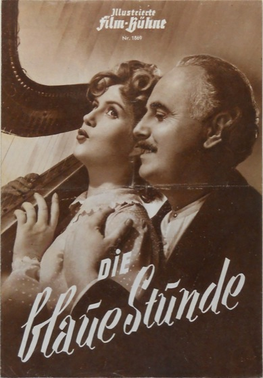
The Blue Hour is a 1953 West German comedy film directed by Veit Harlan and starring Kristina Söderbaum, Hans Nielsen and Kurt Kreuger. Production began on the film in October 1952. It was shot at the Göttingen Studios and on location on the island of Capri. The film's sets were designed by the art director Walter Haag. Because of public protests against his wartime role as a Nazi filmmaker, Harlan considered turning over the project to his colleague Geza von Bolvary but eventually decided to direct it himself.

Hotel Sacher is a 1939 German drama film directed by Erich Engel and starring Sybille Schmitz, Willy Birgel, and Wolf Albach-Retty.

Woman Without a Past is a 1939 German drama film directed by Nunzio Malasomma and starring Sybille Schmitz, Albrecht Schoenhals, and Maria von Tasnady. It was shot at the Grunewald and Johannisthal Studios in Berlin. The film's sets were designed by the art director Hans Ledersteger.

Stradivari is a 1935 German drama film directed by Géza von Bolváry and starring Gustav Fröhlich, Sybille Schmitz and Harald Paulsen.
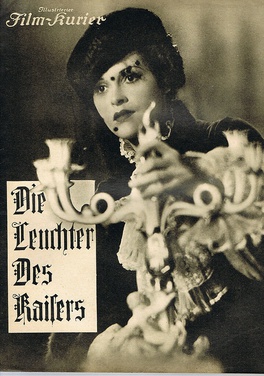
The Emperor's Candlesticks is a 1936 Austrian historical adventure film directed by Karl Hartl and starring Sybille Schmitz, Karl Ludwig Diehl and Friedl Czepa. It is an adaptation of Baroness Orczy's 1899 novel The Emperor's Candlesticks. A Hollywood film version of the story The Emperor's Candlesticks was released the following year.

Farewell Waltz is a 1934 German historical musical drama film directed by Géza von Bolváry and starring Wolfgang Liebeneiner, Richard Romanowsky and Hanna Waag. It is based on the life of the composer Frédéric Chopin.
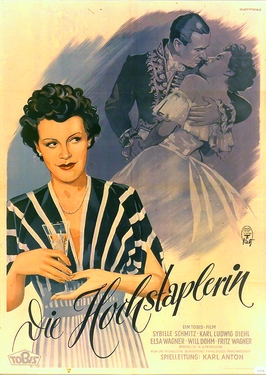
The Impostor is a 1944 German comedy film directed by Karl Anton and starring Sybille Schmitz, Karl Ludwig Diehl and Will Dohm. It was shot at the Johannisthal Studios in Berlin. The film's sets were designed by the art director Robert A. Dietrich.



















